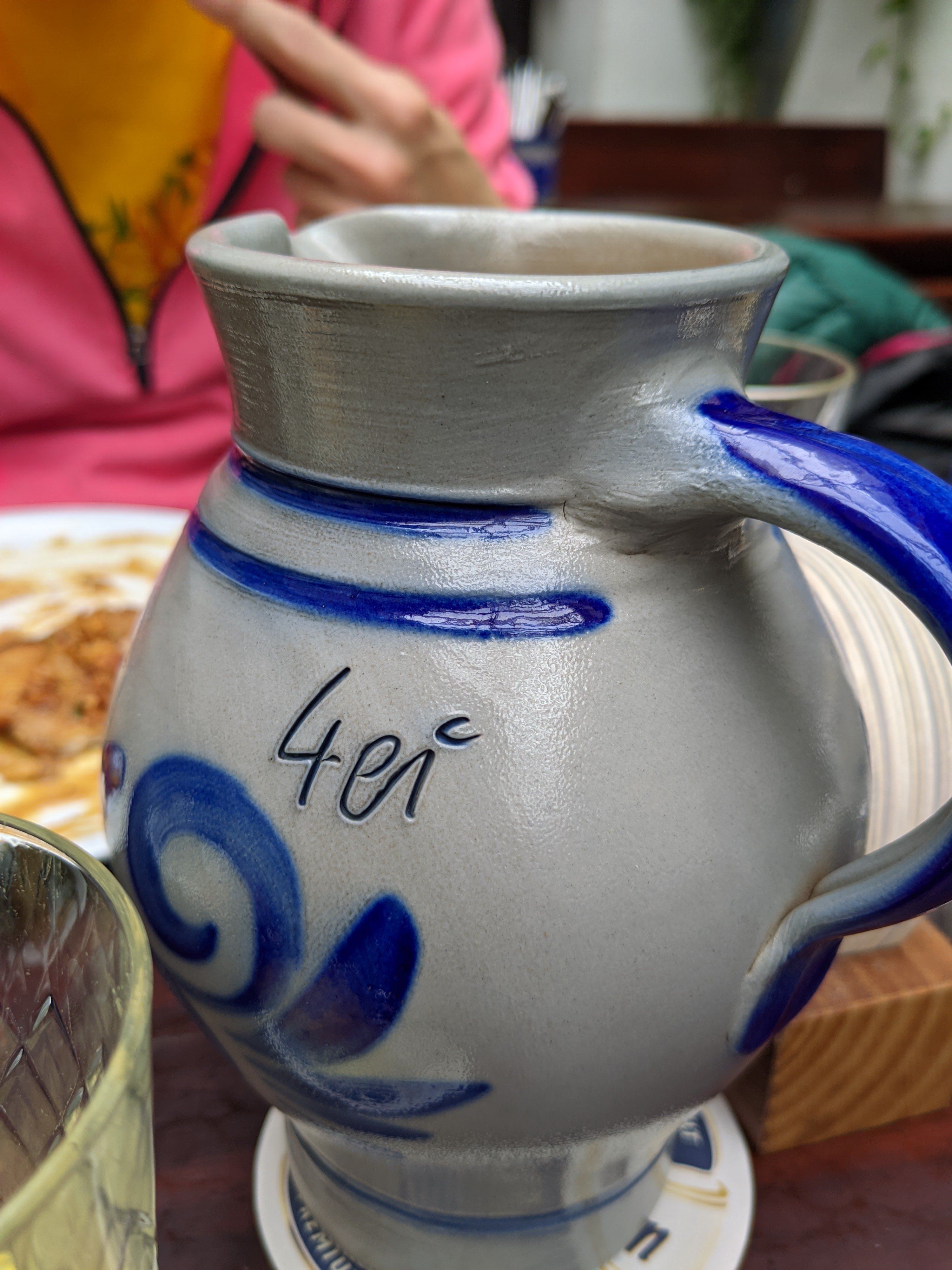I just make the pan hot and wipe it out with a paper towel quickly so it doesn’t burn the paper. If I made a sauce in it, a wet paper towel.

When I bought my house I discovered a treasure trove of old cast iron pans in the (very modern) oven. They all looked like this and smelled like rancid oil. It was not fun to deal with lol
Sounds terrible but also awesome if they were good enough to be used after cleaning. I know that smell though… terrible.
that precisely decribes my scenario yes
I’m yet to decide if that gut biome is a nerf or a buff.
I use chain mail.
if you want to destroy the pan, yes
I had to scroll way too far to find this. Chainmail, salt, water, wooden utensils, and whatever you season with (I use Crisco).
Reading comments in this thread reminds me why I don’t let anyone use my cast iron.
I tend to use a paper towel with a little bit of canola oil, after hand washing it lightly with soap and water.
My cast iron won’t win beauty pageants, but they are functional equipment, not wall decorations.
If I am babying them, kosher salt and oil once it’s cool enough, then rinse & dry. Otherwise I scrape at it with the metal spatula then wash with soap and a scratchy sponge, it’s fine as long as you don’t soak them, and do dry them well after.
We do have a chainmail scrubber - my husband was soaking the skillets and killing the finish, he likes the chainmail scrubber.
haha tell him to stay over there with the washer machine
Modern soaps lack the phosphates that really mess with cast iron. I typically do this.
Little bit of water, heat on high until it boils most things off the pan.
Scrape with metal spatula and stick items.
Hit it lightly with soap and sponge.
Dry with paper towel.
Spray with oil.
Wipe oil all sides.
Only missing putting it back on heat after drying with a paper towel to boil off any residual water
People are so weird with their cast iron care… I scrub it with hot water, a brush, and maybe some soap depending on how dirty it is. Then I dry it off LIKE A NORMAL PAN and heat a little oil in it again to keep it from rusting. The only thing you need to do different than a normal pan is get some oil on it and heat it up after washing. It’s a ferrous metal so it’ll rust if it isn’t protected.
Edit: for wiping out I just use a paper towel with a little oil on it
generally speaking, it shouldn’t be too difficult to get stuff off. I generally use blue scotchbrite scrubbie pads. They’re non-abbrassive and have no metal or cleanser in them; but they’re scratchy while being soft enough.
Other things that gets recommended is “washcloths” made of maille links (for example.)
The next stuff is some generic recommendations that you may or may not find useful (or have already heard.), but they’re key steps in getting that truly nonstick surface… and it starts with how you maintain and cook with it.
Cast iron needs to be maintained- it was the original non-stick pan, mind you, but that nonstick surface needs maintenance. I typically season mine with avacodo oil applied in very light coatings and kept in a 350f oven. it’s best to stay below the smoke point of whatever oil you’re using; so check that and go 50-100 degrees under. The oil is polymerized when it’s no longer tacky; and I tend to apply about a teaspoon at a time using an old microfiber cloth. (Less is best. I place the cloth on the top of the oil bottle and give it a quick flip-and-down. that’s enough. for a full 12" pan, and probably enough for 16" if you have one.)
once its seasoned well, you can maintain it by occasionally putting a light coating of oil after use, cleaning and drying.
Also, it’s important to remember that you need some kind of oil in the pan for it to be truly non-stick. I use avocado oil as my go to; it has no real flavor and it doesn’t smoke like olive oil does. If you want to use butter, you can also get cute and add both avacado and butter and avoid burning the butter that way. It doesn’t take a lot- a tablespoon is frequently enough. for something like bacon, I put a light “seasoning” coat on before cooking- you don’t really want animal fats to season, it’ll burn and turn bitter.
Finally, you want to preheat the pan slow-ish. it’s not an aluminum nonstick; it takes time, let it get up to temp.
I print some of the endless online discussions about cast iron care. The paper, the ink and the opinions make for an excellent mild abrasive that doesn’t permeate the pores or excessively damage the seasoning patina
Make sure to use food grade ink
I use a green scotch brite pad and occasionally a modicum of dish soap.
So microplastics and soap embedded in your iron. Yum.
Try boiling semen and pepsi in it.
Soap and water. It’s cast iron, not silk.
Try not to use soap if possible, it can get into the iron since it’s porous and become a part of the “seasoning”. Same goes for mortar and pestle care
victoria (cast iron maker that’s a above lodge but below others,) recommends using a little dish soap.
even if the soaps do remove some seasoning, you should have enough on there, and cooking with enough oil that it regenerates. That’s the secret to cast iron’s longevity, in point of fact. Every time you cook with it, you add some more to the seasoning. (it also can develop some marvelous flavors if you’re intentional in how you cook with it.)
What is above Victoria?
Depending on who you talk to? Lancaster and stargazer; and then there’s the heirlooms that are 100% worth hunting down (like the old wagners.)
If you’re looking for enameled cast iron, la creusette is top, imo. (Enameled doesn’t take seasoning, but the finish is much more durable than ptfe)
I would suggest Victoria being a good place to start; it’s not going to absolutely wreck the bank. Some of the Lancaster are lighter though making them easier to use… and my faves are some literal heirlooms from my grandma (which went back a few generations further,)
Nice, thank you. I just have a Lodge. Haven’t had any gripes about it, but curious what difference would come from leveling up
This is not the case for modern detergents, but is held over from when soaps were all made from lye. The polymerized layers of oil that you have will stay mostly in tact with some dish detergent and a light scrub sponge. After washing and drying mine off with a towel, I apply some oil and heat it on the stove for a few minutes to maintain the seasoning.
But absolutely mortar and pestle should never ever get soap, particularly something like a molcajete made from volcanic rock. I just wipe mine really thoroughly with a clean, damp cloth.
Yep. My pan gets hand washing with a few drops of soap after every use and it’s fine.
Lye, or sodium hydroxide, strips the seasoning layers. It used to be used in soap. People use it when restoring cast iron in the modern day to strip old seasoning off. Then they can start againt and re-seaaon!
I run my mortar and pestle through the dishwasher. It’s glazed stoneware, and is virtually non porous. Molcajete are an exception, but there’s not much good to be gained by having old spice and herb residue in cooking gear.
Interesting thanks for chiming in. I’ve only ever had a molcajete.
I have a marble one. Also can be washed, as it’s non-porous.
What’s the benefit of a molcajete, I wonder? Seasoning, obviously, but any others?
Afaik, it’s traditional to Central American (and maybe South American?) cuisine, but I don’t know any science-y aspects to it’s use. You make salsas and guac directly in it, and I can say they do hit different, but I can’t say exactly why.
Yeah I read something about those. Blends differently than in a blender. I buy that.
Perhaps the original reason was just that that type of stone was available there and this type over here?
Stiff wooden brush, oil and salt
Edit: it’s actually bamboo
I use this kind of metal rag/ sponge?
it’s between a sponge and a rag and it’s metal rings
steel wool? or is it something fancier
no not steel wool

Ooo, that looks nice
Chain mail scrubber. That’s my go to as well
Sounds like chainmail
Everyone has a different 8 step program to cleaning cast irons. I just scrape the fuck out of it with a chainmail “sponge” and water, maybe some coarse salt or s pinch of soap if it’s nasty. I dry it with a towel. I’ve had mine for yeaaaaars and it looks just fine.
If it needs reasoning, I use that as an excuse to buy a slab of bacon












